Whiteness
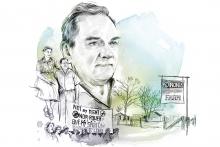
CLARENCE L. JORDAN died on Oct. 29, 1969, at 57 years old. The radical Southerner who dedicated his life to farming, sharing the gospel, and imploring his neighbors to actually follow Jesus is not widely remembered. Jordan died as simply as he lived — buried in a wooden box used to ship coffins, in an unmarked grave, and wearing his overalls. In early 2020, a little more than 50 years after Jordan (pronounced “Jurden”) died, I came across his work and was enamored. I began reading anything from or about him I could find. Jordan’s Georgia roots and love for the South mirrored my own. His charm and cutting humor were irresistible. Most appealing was Jordan’s stubborn commitment to radically following Christ, which led him to reject and rebuke the practices of racism, capitalism, and militarism in the U.S.
On the podcast Pass the Mic, writer Danté Stewart put a name to what I found in Jordan. “The reason why white [siblings] are struggling in this moment is because most of their models have been violent white supremacists,” Stewart said. “White [siblings], they don’t have models of liberation and love, so therefore they’re struggling in this moment.” Clarence Jordan was a “model of love and liberation” that we can learn from now. The dehumanizing forces of racial capitalism and militarism are no weaker in the U.S. today than in his lifetime, and many white Christians are avid proponents of both. Jordan’s resistance and radical theology did not die with him; instead, they can evolve and grow with the times. We should engage Jordan without idolizing him and advance his core commitments with a critical eye, honestly appropriating them for our modern struggles.
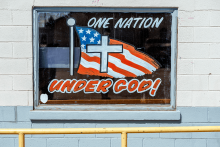
Ever since Jan. 6, 2021, the term “Christian nationalism” has proliferated in discourse, but the precise definition is up for debate. Is Christian nationalism only applicable to those who welcome the label, like Georgia Republican Rep. Marjorie Taylor Greene, who sells “Proud Christian nationalist” t-shirts, and Southern Baptist Theological Seminary president Al Mohler, who said he wasn’t going to run from Christian nationalism on a recent podcast episode? Or can it be applied to hanging images of Jesus in congressional offices and the post-rapture book and movie series Left Behind?
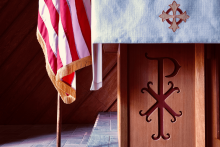
In Keeping Faith, philosopher Cornel West explains that our investment of “existential capital” in the nation-state leaves us with “a profound, even gut-level, commitment to some of the illusions of the present epoch.” We experience amnesia when we allow our nation’s myths to be the foundation of our current reality.

IN THE WAKE of the horrific killings last year of Ahmaud Arbery, George Floyd, Breonna Taylor, and others at the hands of white vigilantism and aggressive policing, many institutions, companies, and other bodies sought to express their opposition to racism, even if their responses were merely symbolic gestures. But the presidents of Southern Baptist seminaries went in what seemed to be the opposite direction, issuing a joint statement in November that disavowed what is known in academic circles as “critical race theory.”
Many Black clergy were shocked but not surprised by the seminary presidents’ statement, coming from a denomination that had sought to defend its racist history and had criticized efforts at racial reconciliation and truth. Two prominent Southern Baptist-affiliated megachurch pastors—Ralph West and Charlie Dates—announced their out-migration from the denomination, and it’s possible that more Black clergy will follow.
Five weeks after the Council of Seminary Presidents released their statement—curiously, on the fretful day, Jan. 6, when a frenzied mob of homegrown white terrorists blitzed the U.S. Capitol—the six presidents, the heads of each Southern Baptist seminary, met with a group of Black Southern Baptist pastors. The pastors reported that the exchange was conciliatory, and that they felt heard—even as the seminary presidents doubled down on their rejection of critical race theory. The presidents offered gestures toward further conversations and a stronger commitment to recruit and financially back more Black students at their schools, but no counterproposal concerning critical race theory.

What remains for all who’ve hit rock bottom is the long road to healing.

Before I learned my town’s true history, I cared about racial justice.

What value is there in circulating a depiction of innocent black death?
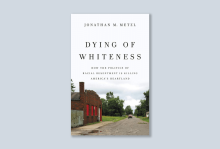
IMAGINE A MAN seized by a demon. He cannot be bound by chains or confined within walls. He is a danger to himself and everyone around him. In Dying of Whiteness, Jonathan M. Metzl lays out a compelling case that white folks are so convinced of an ideology of whiteness that we are willing to kill, and even to die, for it. One Christian way to talk about this would be to say that white people are possessed.
In his book, Metzl examines three public health case studies: gun culture in Missouri, particularly white male suicide; the failure to expand Medicaid in Tennessee; and the gutting of public schools under cruel budget and tax policies in Kansas. For each, he calculates the years of life lost because of poor political decisions made under an ideology of white supremacy.
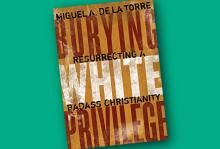
WHITE EURO-AMERICAN Christianity is dying, according to Miguel A. De La Torre, and from his point of view, its death is necessary. It has distorted the gospel with Euro-American nationalist ideals that benefit white communities at the expense of communities of color—heretical beliefs grounded in fear and exclusion, rather than love. In Burying White Privilege: Resurrecting a Badass Christianity, De La Torre deconstructs Donald Trump’s abundant evangelical support. In doing so, he offers guidance on how Christians can move forward.
Whiteness lies, he explains. It lies about the superiority of particular beliefs and nations. And this superiority complex has led to a lot of violence being done under the name of Christianity, including displacement, slavery, and genocide.

WHEN I TRAVEL to a city, I find art museums and their masterpieces: “Sunflowers” in Amsterdam, the “Prodigal Son” in St. Petersburg, “David” in Florence. Van Gogh, Rembrandt, Michelangelo. These are masters, according to some cultural imagination.
But it wasn’t until this past April that I encountered an Asian master and masterpiece: Katsushika Hokusai’s “Under the Wave Off Kanagawa.” The print is better known as “The Great Wave”—you know, the Apple wave emoji. Why is this the first Asian masterpiece that I’ve seen?

In “Remembrance and Repentance” (May 2019), Kimberly Burge wrote about her church, founded by Methodists who had split from their denomination in 1844 “so that its members could defend slavery while remaining within the church.”
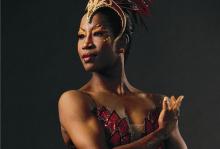
BLACK BALLERINAS have long perfected the art of altering pink tights and ballet shoes to match their skin tones. The night before a class with company members of the Dance Theatre of Harlem, the first black classical ballet company, pots of water with multiple tea bags boiled on the stove in my home, so I could dye my legwear and footwear. It was a process my mother swore by—and it worked.
In November 2018, nearly 200 years after pink ballet shoes were designed for white dancers, the company Freed of London released pointe shoes in colors that match Asian and black skin tones. It’s a step in the right direction, even though the ballet world continues to be characterized by whiteness.
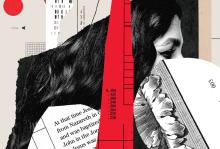
I'M HIGHLY SUSPICIOUS of the growing obsession with genetic ancestry tests. 23andMe. AncestryDNA. People can now scrape their inner cheek with a swab, mail it to a company for $99, and brag to you about a cultural or racial epiphany they’ve had based on being 4.7 percent of something. Who knows how this personal genetic information might be used. I suspect these companies respect people’s privacy as much as Facebook does. I’ve heard that governments and police departments are already using this information to track people.
And yet, I would be lying if I said I haven’t thought about purchasing a DNA kit for myself. Yes, I know that such tests provide limited and potentially misleading information. Yes, I understand that they fuel problematic framings of race that tie race to genetics when race is actually something socially and politically constructed. But I’m still curious!
I don’t know if I will ever take a test. I ask myself: Should I be contributing to this system? Could I convince Sojourners to pay for my test if I were to write an article about it, thus shifting some of the ethical burden away from me as an individual?

BLACK AND BROWN folks have discussed at great length white supremacy and empire, but unless white folks have the conversation, those demons will never be fully cast out of our lives. White folks have become content with a lifestyle that hovers above black and brown folks and doesn’t dive into the white supremacy and empire that threatens them.
But Greg Jarrell, author of A Riff of Love: Notes on Community and Belonging and a self-described “white, middle-class, highly educated, straight man,” departs from this pattern. Jarrell plunges into the issues, examining the story of his family’s more-than-a-decade-long journey of building QC Family Tree, an antiracist spiritual community of people in solidarity with black folks experiencing gentrification and displacement in the Enderly Park neighborhood of Charlotte, N.C.
Jarrell, who plays saxophone, frames the book around the concept of riffs, which he describes as “a few notes ... the essence of the full melody, the foundation from which a whole work is constructed.” Some of the greatest jazz arrangements begin with a riff, born of careful attention to a melody and improvisation on a theme.
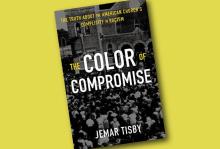
A HAUNTING, emotionally charged, fact-based narrative, The Color of Compromise: The Truth about the American Church’s Complicity in Racism covers 400 years of American civil rights history. It is a withering look at the role white Protestant churches played in reinforcing institutional support of slavery and racism. Its main thesis is that moderate Christians have had the clout to rebut racism but have an abysmal record of doing so. This story is woven from a survey of biographies, memoirs, classics of history, and serious journalistic research.
White moderates, Jemar Tisby demonstrates, time and again mouthed sympathetic clichés toward the black community but inevitably supported the status quo. Probably the most iconic example Tisby gives is that of Billy Graham, one of the most prominent Protestant figures of the 1950s and 1960s.
Graham talked a good game: He publicly removed ropes segregating black churchgoers at his massive rallies. But despite these “positive” optics, Graham never participated in civil rights demonstrations. He instead insisted that civil rights was a local matter. He railed against communism, feeding into the term’s use as coded language that marked “subversive” U.S. political activity as evidence of Soviet influence. When the Watts riot broke out in Los Angeles, Graham quickly declared that “rioting, looting, and crime ... have reached the point of anarchy,” while failing to explain the profound issues that caused the rebellion.

LAURA KIM TELLS an illustrative story in the Race/Related newsletter published by The New York Times about a white boss who responded to her request for promotion by saying, “You’re so good at what you do. I thought you wanted to stay in your position forever ... Normally, Asian women keep their heads down and stay very quiet.”
It is the kind of story that professional, middle-class Asian Americans are telling more and more these days. Stereotyped as determined and technically competent, but not especially creative, we might be the kind of people you’d want as your accountant or computer expert, but we are definitely not management material. In my experience, Kim’s story rings true, but it’s not the only true story about Asian-American experiences.
I think that’s one of the reasons I found Fatima Farheen Mirza’s debut novel, A Place for Us, about an immigrant South Asian Shia Muslim family in post-9/11 California, so interesting. As part of a South Asian Shia Muslim community myself (the Ismaili community), the various religious references (to Imam Ali and Imam Hussain, to the presence of the Quran as a protection) felt both familiar and comforting.
Equally familiar, if less comforting, were the family dynamics. The lives of the children were governed by rules written by religious tradition, maintained by family, and enforced by the broader community.
The kids largely viewed the white world outside the home as a place of freedom, a world where you could choose your own path of study, select your own romantic partner, and go to parties, all without the prying eyes of your parents and the wagging fingers of community members. At home, at the mosque, at Muslim events, you bore the burden of your tradition. Your words and deeds represented your parents at all times.

I have been asked by two dear friends, “how can I be a stronger ally?” Being the slow emotional processor that I am, I wanted to spend some time with this before I answered them. I surely appreciate and love these two individuals, and I appreciate their vulnerability in asking me this question. I am not going to do much coddling here; I don’t know that I believe that love requires coddling. Here are six things you can do to be stronger allies.

A year ago, when the death of Freddie Gray and resulting unrest in Baltimore filled the news, the Rev. Kathy Dwyer felt she had to do something.
“Every time I turned on the TV, I just felt like I was getting punched in the gut from watching the issue of racism just escalate in our country,” said the white pastor of a predominantly white United Church of Christ congregation in Arlington, Va.

Sparked by the shooting death of Mike Brown in Ferguson, the subsequent deaths at the hands of law enforcement of Eric Garner in New York and 12 year-old Tamir Rice in Cleveland, protests under the banners of #ferguson, #icantbreathe, and #blacklivesmatter have spread around the country and a passionate conversation about the role of race in America has been rejoined. These protests, along with coverage by news media and the voices of social commentators and faith leaders — as well as the well-timed critical success of the movie Selma — have moved matters of race to the fore of our cultural consciousness and conversation in a way rarely seen since the Civil Rights movement of the 1950’s and 1960’s.
And yet, despite this heightened awareness about the experience of people of color, there remains a great distance and disconnect between white and minority communities regarding not only the actions of law enforcement, but also the varied manifestations of systemic and institutional racism. Indeed, the very real troubles experienced by communities of color are largely invisible to many whites. In Ferguson itself, many whites prior to the death of Mike Brown reported being unaware of the tension between African-American community and law enforcement. Nationwide, whites and African-Americans had very different perspectives. Whereas 80 percent of African Americans said Mike Brown’s shooting raised issues about race, only 37 percent of whites said the same.
In a time when renewed engagement is desperately needed, it is difficult to have dialogue when a vast majority of whites cannot empathize with the experience of communities of color, or, in some cases, acknowledge that there is a problem at all.
